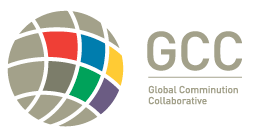The Global Comminution Collaborative (GCC) is a networked group of researchers that spans the globe forming an independent non-profit Foundation, which is housed in Germany to serve global interests. Their aim is to develop an outstanding capability in the field of comminution research and offer practical delivery well beyond the potential of individual research groups.
With a small number of researchers stretching over the discipline, it is sensible to pool resources to build a far stronger whole to comprehensively span the comminution process chain. The vision of the GCC is underpinned by the principle that work should be enjoyable and enable researchers to flourish, with efforts directed at personal satisfaction, and the good of colleagues, the industry and society who benefit from the GCC endeavours. The GCC was therefore founded through personal contact, building a strong, coherent group of world-leading researchers, bonded by common principles and a deep friendship.
The GCC brings critical mass to comminution research and application through linking leading research groups from around the globe into a coherent collaborative.
The GCC is strives to address the challenges of sustainable comminution in the mining industry. It brings critical mass to comminution research and application through linking leading research groups from around the globe into a coherent collaborative that can span the full range of size reduction processes – these cover a range of required skills along the process chain and across the skills base: crushing, milling, HPGR, dry processing, mechanistic modelling, ore breakage characterisation, classification, fine grinding, circuit design, dynamic simulation, process optimisation, etc. The group conducts industry-focused research to improve the efficiency of the comminution process while meeting the design needs of large, low grade ore bodies.

OBJECTIVES OF THE GCC
The broader long-term goals of the collaborative are to support the mining industry through:
- Identification of process improvement opportunities through on-site review and research.
- Practical implementation of site-based opportunities.
- Accurate models of process equipment, including ore variability, for design and optimisation.
- Meaningful ore characterisation tests.
- Incorporation of liberation into process models.
- Circuit design – including incorporating new and novel equipment.
- Minimisation of energy and water use and of environmental impact.
- Integrate comminution design and operation within the process chain: geometallurgy, mining process, early upgrade, coarse recovery processes, reduction of fines production and thus improving water recovery and reducing slimes dams, methods of improved liberation.
- Grow new highly competent researchers.

